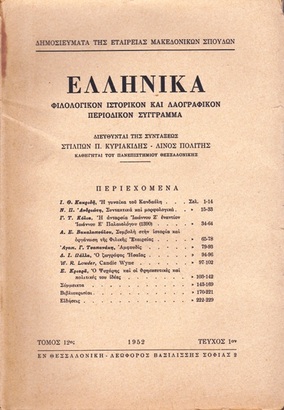Φορώντας τα ρούχα των αντρών : Η μεταμφίεση στις Εκκλησιάζουσες του Αριστοφάνη
Part of : Ελληνικά : φιλολογικό, ιστορικό και λαογραφικό περιοδικό σύγγραμμα ; Vol.44, No.2, 1994, pages 303-317
Issue:
Pages:
303-317
Parallel Title:
Wearing Men's Clothes : Transvestism in Aristophanes'Ecclesiazusae.
Author:
Abstract:
In this play women seem to behave like old men. Their doddery steps during both the Parodos and Praxagora's instructions in w . 276-269 prove that this, at least, is their intention. Nevertheless, there are elements in their vocabulary which present them as young men. Indeed, Praxagora looks like «a handsome youth», while her companions have perfectly preserved white skin. Of course, there is no stage convention other than a white mask to indicate that a character is not supposed to be really a man but rather (a male actor playing the role of) a woman dressed as a man (see w . 385-387). For Aristophanes, this situation is much more than a simple conventional need generated by the plot. It becomes an occasion for him to show the women imprisoned within a vicious circle: in order to form a political body, they have to borrow corporeal characteristics from young men; But the social representations of the young men themselves have feminine features. It is not possible for Aristophanes' women to look like old, or even middle-aged, men. They cannot get rid of their marginal characters, of the alterity distinguishing men from women, precisely because they have to dress as young men.
Subject:
Subject (LC):




